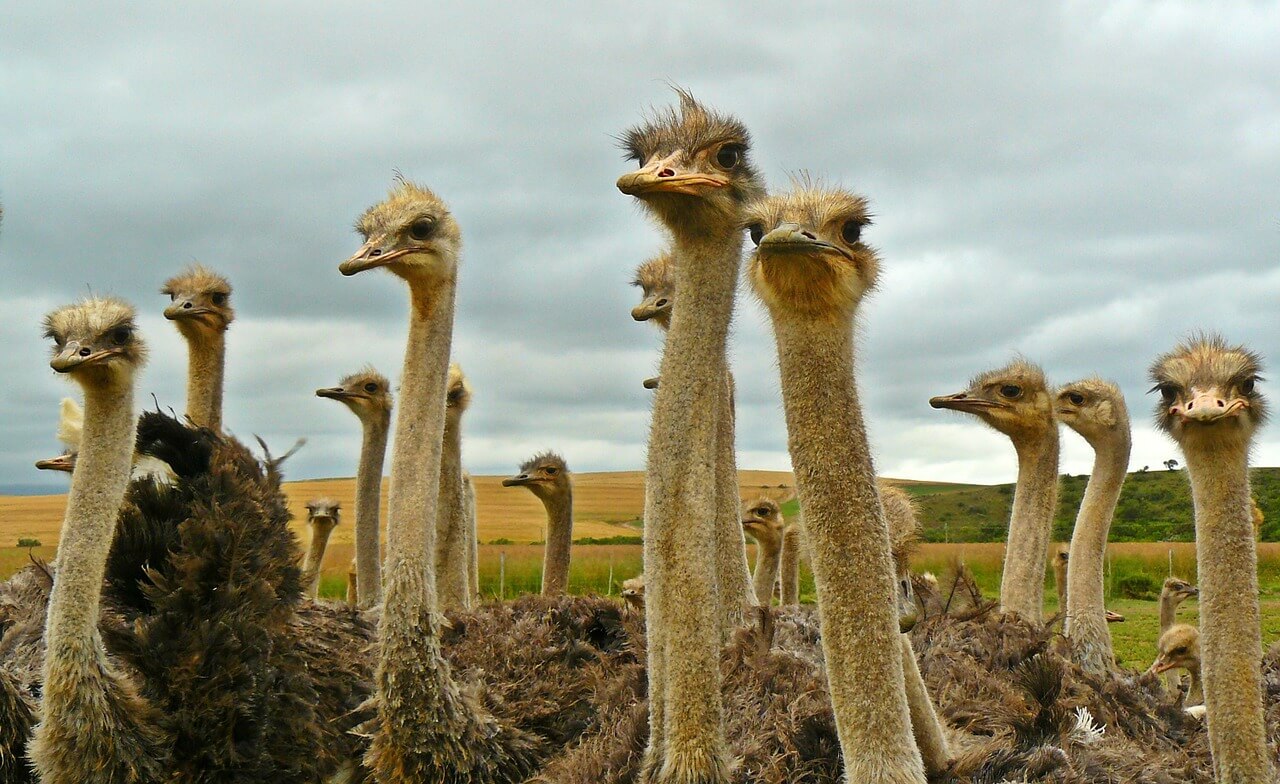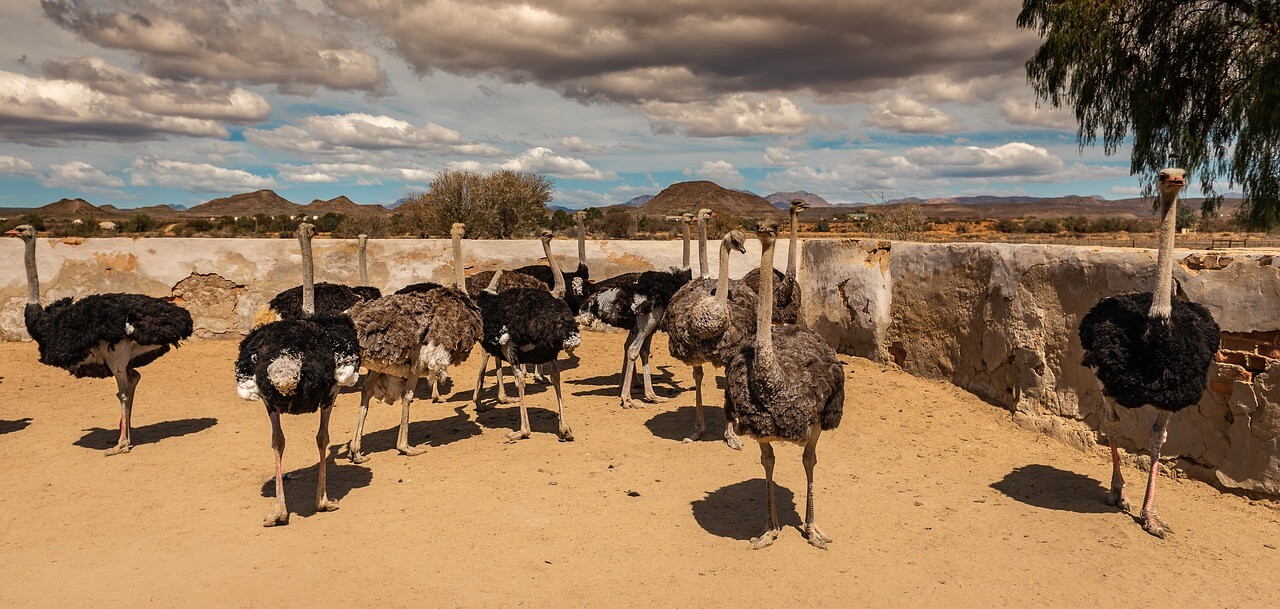Ostriches are raised commercially for their hides and their plumes, which are used to make boots and other leather goods, as well as accessories. Ostrich eggs are cooked and eaten in South Africa and in some very upscale restaurants around the world. The shells are useful for artistic pursuits as well as the manufacture of practical items. Lean, healthy ostrich meat is a mainstay in South Africa and is becoming a delicacy worldwide. Read on to learn more on how to start an ostrich farm.
What You'll Learn Today
- Ostrich Farming In The United States
- 1. Decide which sorts of ostrich products you want to sell
- 2. You’ll need to have enough land
- 3. You will need to provide some sort of shelter for your ostriches
- 4. You will need to construct fencing
- 5. You will need to locate a source of food
- 6. You’ll need to be sure that you have a good source of water for your ostriches
- 7. You’ll need to decide on which type of ostrich you want to raise
- 8. You will need to decide how and where you want to purchase your ostriches
- How Much Money Does the Ostrich Farmer Make?
- How Much Does It Cost To Open An Ostrich Farm?
- Are Ostriches Profitable?
Ostrich Farming In The United States

Until recently, ostrich hides have come mainly from South Africa, but in the 21st century, ostrich farming has gradually made its way to the United States and around the globe.
If you’ve been thinking about taking up farming but are overwhelmed by the prospect of having to buy a huge amount of acreage or handle large mammals, such as cows, you may want to consider becoming an ostrich farmer.
All in all, ostriches take up less space and eat less food than cattle. In some ways, they can be easier to handle. Even so, caring for ostriches brings its own challenges.
Here are eight considerations to keep in mind when thinking about taking up ostrich farming.
1. Decide which sorts of ostrich products you want to sell
When you raise ostriches you can sell:
Naturally, if you want to sell leather or meat, you will need to be comfortable with slaughtering your stock, or you will need to find a processor for your meat and hides.
If this idea makes you squeamish, you may just want to sell eggs, feathers, chicks and/or mature birds.
2. You’ll need to have enough land
You’ll need to have enough land to keep your ostriches happily and healthily. Even though ostriches do not need as much space as cattle, they do need to be able to roam freely and live hygienically.
Generally speaking a mature ostrich needs between 1 and 3 acres.
3. You will need to provide some sort of shelter for your ostriches
At a bare minimum, they will need a three sided shed large enough for the number of birds you plan to keep to be able to congregate comfortably.
The shed must be a minimum of 12 feet high because ostriches can stand 8 feet high. The shed must protect them against sun, wind, rain and other potentially damaging elements.
4. You will need to construct fencing
Ostrich fencing must be high and sturdy and buried at least a foot deep all the way around. You must use sturdy, welded wire, at least 8 feet high. A couple of strands of barbed wire along the top will help keep predators out.
5. You will need to locate a source of food
Generally speaking you will need to be able to easily purchase ample amounts of a commercially prepared ostrich feed. This is typically a pelleted type of feed that is exactly formulated to meet the needs of growing and breeding ostriches.
Be sure your local feed store is able to stock the type of feed you need. If they are able and willing to deliver, that’s a plus.
You may also wish to plant your property in types of grasses and crops that your ostriches will enjoy browsing. Generally speaking, 20% of your ostriches’ feed should come in the form of fresh produce.
6. You’ll need to be sure that you have a good source of water for your ostriches
Ostriches are very prone to drowning in small amounts of water by simply ducking their heads under or by falling and having their heads fall in the water. You must look for especially designed ostrich watering devices to prevent accidentally losing some of your expensive stock.
7. You’ll need to decide on which type of ostrich you want to raise
There are three types that are typically chosen for ostrich farming. They are:
- Red neck ostriches
- Blue neck ostriches
- African black ostriches
Of these three, the African black is usually preferred because these types of birds are a bit more docile and bit smaller than the other two types.
Both the blue neck and the red neck ostriches tend to be quite large and may be rather aggressive. If you are a beginning ostrich farmer, you are best off choosing African black ostriches.
8. You will need to decide how and where you want to purchase your ostriches
You can start off with mature birds, but these are rather expensive and a mature bird is an unknown quantity. You may end up with an animal that is difficult to handle.
Other options include purchasing young chicks, which you can raise yourself or purchasing eggs that you can hatch yourself. Both of these options are quite a bit less expensive than purchasing fully grown birds. Even so, both of these options require quite an investment of time in hatching and raising the young birds.
Remember, if you start out with eggs, you will need to start out with a substantial investment in equipment necessitated by purchasing an incubator. If you’re serious about ostrich raising you will eventually need an incubator, anyway, so you might as well start out with one.
How Much Money Does the Ostrich Farmer Make?

While it is not really possible to come up with a single estimate as to how much money an ostrich farmer can make, it is possible to do the math for ostrich farming in your area.
Generally speaking, you may be able to sell a full grown ostrich for as much as $40,000; however, when determining how much money you can make as an ostrich farmer, you must also take into account your costs for a wide variety of items including:
- Veterinary care
- Start up stock
- Outbuildings
- Fencing
- Land
- Feed
How Much Does It Cost To Open An Ostrich Farm?

The amount it costs to open an ostrich farm is really dependent upon a number of extremely variable factors, including:
- The price of land in your area
- Whether you need to build outbuildings and put up fence
- Whether you decide to start with eggs, chicks or mature birds
Generally speaking, it costs about $50 a month to feed and care for ostrich chicks. Once they reach one year of age, this amount increases to about $75 a month. Adult ostriches, two or more years in age, cost about $100 a month to feed, care for and provide veterinary care.
Are Ostriches Profitable?
According to many experts, ostrich farms are a very profitable form of agricultural product project. You may hear them called “farms of the future”. This is because ostriches yield a wide variety of products with very little input.
If you can find, develop and/or create a market for your products, you stand to make a very high return on investment. The key to success in ostrich farming lies both in knowing how to care for these unusual animals and knowing how to market them.
Trying to understand the difference between ostriches and their cousins – emu? Here it is explained. And if you would like to learn how to ride these beautiful animals, here is our guide.
Around how much money do I need to start an ostrich farm here in Scotland? Is £100,000 enough?
Hi I’m very much interested to start Ostrich farming needs more information. Thank yoy